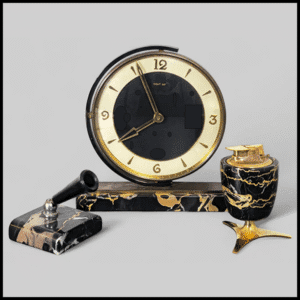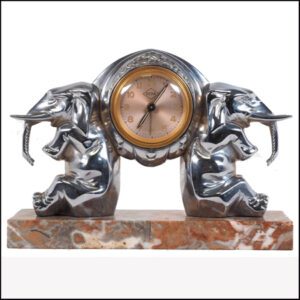There’s something irresistible about vintage antique clocks. They tick with history, whispering stories from centuries past. For many collectors, the charm isn’t only in their ornate dials or elegant pendulums—it’s in how these pieces make time feel human again. Each clock represents a blend of engineering, art, and nostalgia, a time capsule from an era when craftsmanship truly mattered.
Why People Love Collecting Vintage Antique Clocks
Collecting vintage antique clocks is more than a pastime—it’s a journey through design, innovation, and artistry. From classic mantel clocks to elegant wall pieces, each one offers its own narrative. The soft tick-tock of a restored clock adds warmth to any space, bridging the past and the present.
Enthusiasts often say that once you own your first vintage antique clock, you’re hooked. There’s a fascination in understanding the mechanics, researching the maker, and seeing the clock come to life again after decades of rest. For many, it’s about the satisfaction of preserving something authentic in a world dominated by digital sameness.
The Allure Of Vintage Art Deco Clocks

Among the most sought-after pieces are vintage art deco clocks, admired for their bold geometry and sleek design. Produced during the roaring 1920s and ‘30s, these clocks embody the glamour and optimism of the era. Chrome details, streamlined shapes, and striking contrasts make vintage art deco clocks a centerpiece of any collection. They bring a sculptural element to interiors, blending beautifully with both modern and retro décor.
Charm And Sophistication Of Vintage Antique Clocks
Then there are vintage French mantel clocks—masterpieces of elegance and precision. Known for their fine porcelain cases, gilded accents, and intricate movements, these clocks were often found in aristocratic homes. Each vintage French mantel clock reflects an era when beauty was built to last, not just to impress. Their grace, combined with mechanical excellence, makes them a favorite among seasoned collectors.
Exploring The Depth Of Vintage Antique Clocks
The joy of collecting vintage antique clocks often comes from variety. You’ll find everything from stately grandfather clocks to compact travel timepieces, all with distinct personalities. Some collectors focus on specific regions or makers—others simply follow what speaks to them.
Condition and authenticity matter, of course, but so does connection. A clock that once adorned a 19th-century parlor or ticked through wartime London holds emotional gravity. When restored, it doesn’t just keep time—it keeps memory.
How To Start Your Own Collection
If you’re new to vintage antique clocks, start small. Choose a style that resonates with you—perhaps a modest wall clock or a charming mid-century piece. Look for movement quality, case condition, and maker’s marks. Auctions, estate sales, and reputable dealers can be treasure troves for discovery.
Remember: it’s not about how many clocks you own, but how much joy they bring. The best collections evolve naturally, guided by curiosity and appreciation rather than mere acquisition.
Where To Find Authentic Pieces

Serious collectors seek vintage antique clocks from trusted sources. Specialized shops, horological fairs, and online marketplaces that verify authenticity are excellent starting points. When possible, inspect the internal movement—many hidden gems reveal their true worth through the craftsmanship inside.
And if you ever decide to showcase or sell, presentation matters. A well-maintained vintage art deco clock or vintage French mantel clock displayed under soft lighting tells its own quiet story—an intersection of art and time.
You Are Collecting Time Itself
Collecting vintage antique clocks is ultimately about capturing moments you can hold, hear, and see. Every tick is a heartbeat from another century, a reminder that beauty doesn’t fade—it evolves. Whether you’re drawn to the symmetry of vintage art deco clocks or the refinement of vintage French mantel clocks, each adds soul to your surroundings.
Owning and caring for vintage antique clocks isn’t just collecting objects—it’s preserving history, honoring craftsmanship, and keeping time alive in its most poetic form.


